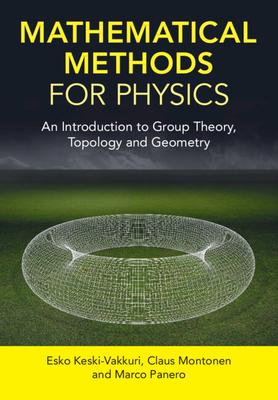Let $M$ be the four-dimensional Minkowski space, with coordinates $x^{0}, x^{1}, x^{2}$, and $x^{3}$. Let us define
Question:
Let $M$ be the four-dimensional Minkowski space, with coordinates $x^{0}, x^{1}, x^{2}$, and $x^{3}$. Let us define a linear operator $*: \Omega^{r}(M) \rightarrow$ $\Omega^{4-r}(M)$, such that
$$\begin{array}{ll}
r=0: & * 1=-d x^{0} \wedge d x^{1} \wedge d x^{2} \wedge d x^{3} \\
r=1: & * d x^{i}=-d x^{j} \wedge d x^{k} \wedge d x^{0}, \quad * d x^{0}=-d x^{1} \wedge d x^{2} \wedge d x^{3} \\
r=2: & *\left(d x^{i} \wedge d x^{j}\right)=d x^{k} \wedge d x^{0}, \quad *\left(d x^{i} \wedge d x^{0}\right)=-d x^{j} \wedge d x^{k} \\
r=3: & *\left(d x^{1} \wedge d x^{2} \wedge d x^{3}\right)=-d x^{0}, \quad *\left(d x^{i} \wedge d x^{j} \wedge d x^{0}\right)=-d x^{k} \\
r=4: & *\left(d x^{0} \wedge d x^{1} \wedge d x^{2} \wedge d x^{3}\right)=1 \end{array}$$
where $(i, j, k)$ is a symmetric permutation of $(1,2,3)$. The $*$ operator is called the Hodge star operator, mapping a differential form to its Hodge dual. We then define a one-form $A=A_{\mu} d x^{\mu}$, where $\left(A_{\mu}\right)_{\mu=0, \ldots, 3}=(\phi, A)$ is the electromagnetic potential. The electromagnetic field-strength tensor is then the two-form $F=\mathrm{d} A$, with the components $$F_{\mu v}=\left(\begin{array}{cccc}
0 & -E_{1} & -E_{2} & -E_{3} \\
E_{1} & 0 & B_{3} & -B_{2} \\
E_{2} & -B_{3} & 0 & B_{1} \\
E_{3} & B_{2} & -B_{1} & 0 \end{array}\right),$$
where $$\vec{E}=-abla \phi-\frac{\partial}{\partial x^{0}} \vec{A}, \quad \vec{B}=abla \times \vec{A}$$
Finally, we define a one-form $J=J_{\mu} d x^{\mu}=ho d x^{0}+j_{k} d x^{k}$, which corresponds to the electromagnetic current.
(i) Show that the identity $d F=d(d A)=0$ corresponds to the Maxwell's equations $$abla \cdot \vec{B}=0, \quad \frac{\partial \vec{B}}{\partial x^{0}}+abla \times \vec{E}=0$$
(ii) Show that the equation $d * F=* J$ corresponds to the Maxwell equations $$abla \cdot \vec{E}=ho, \quad abla \times \vec{B}-\frac{\partial \vec{E}}{\partial x^{0}}=\vec{j}$$
(iii) Show that the identity $0=d(d * F)=d * J$ corresponds to the continuity equation of the current $$\partial_{\mu} J^{\mu}=\frac{\partial ho}{\partial x^{0}}+abla \cdot \vec{j}=0$$
Step by Step Answer:

Mathematical Methods For Physics An Introduction To Group Theory Topology And Geometry
ISBN: 9781107191136
1st Edition
Authors: Esko Keski Vakkuri, Claus Montonen, Marco Panero





